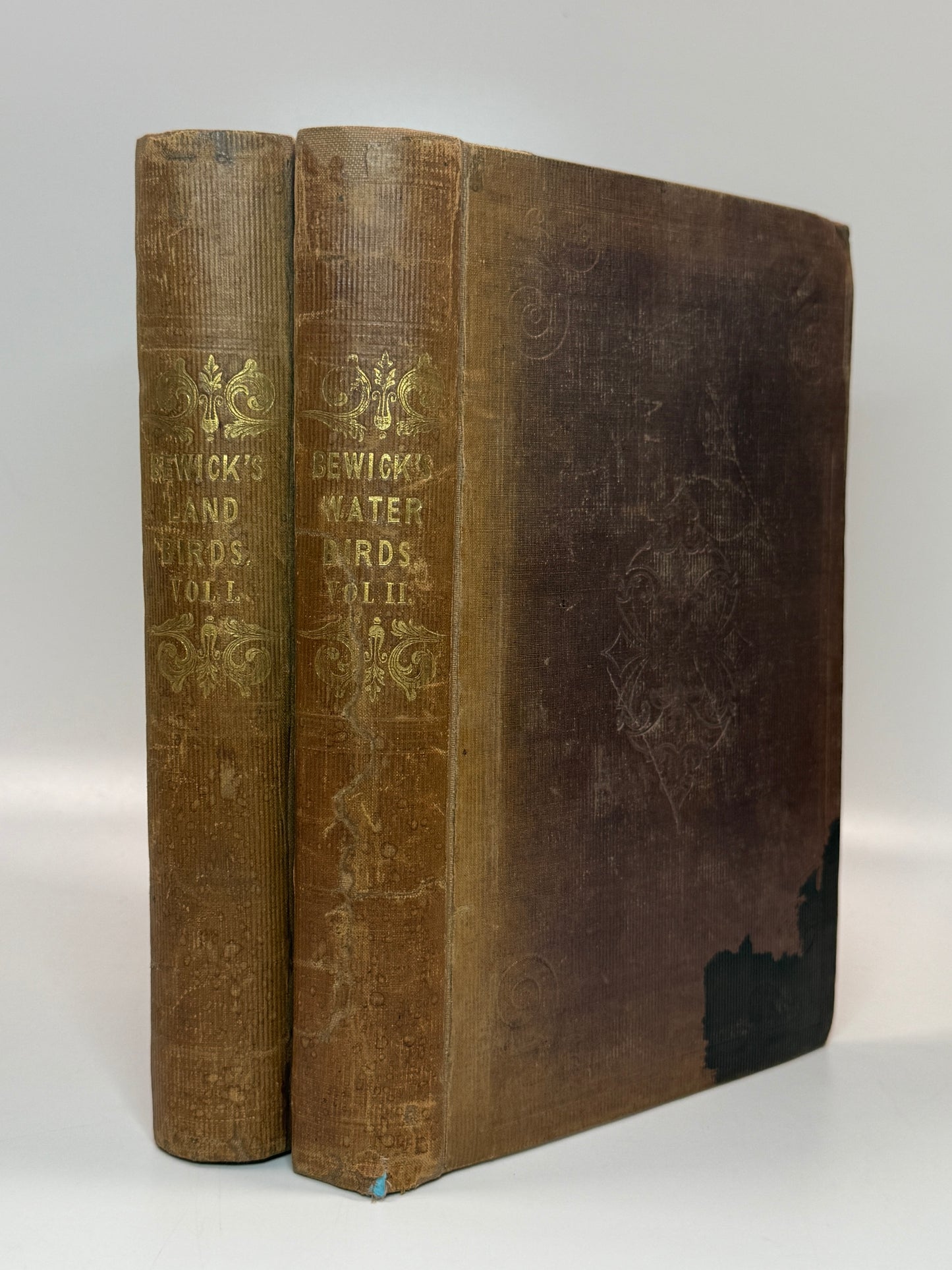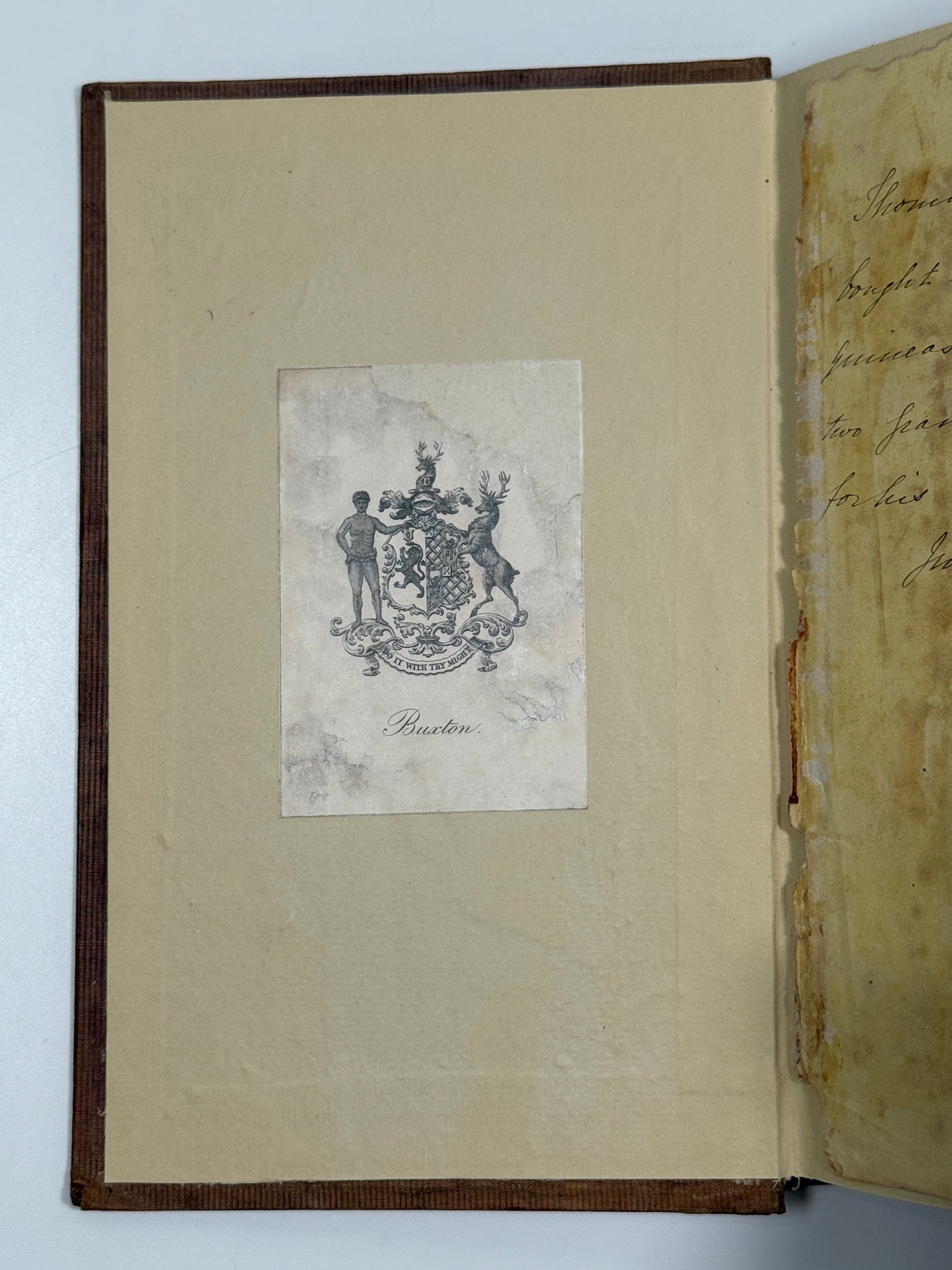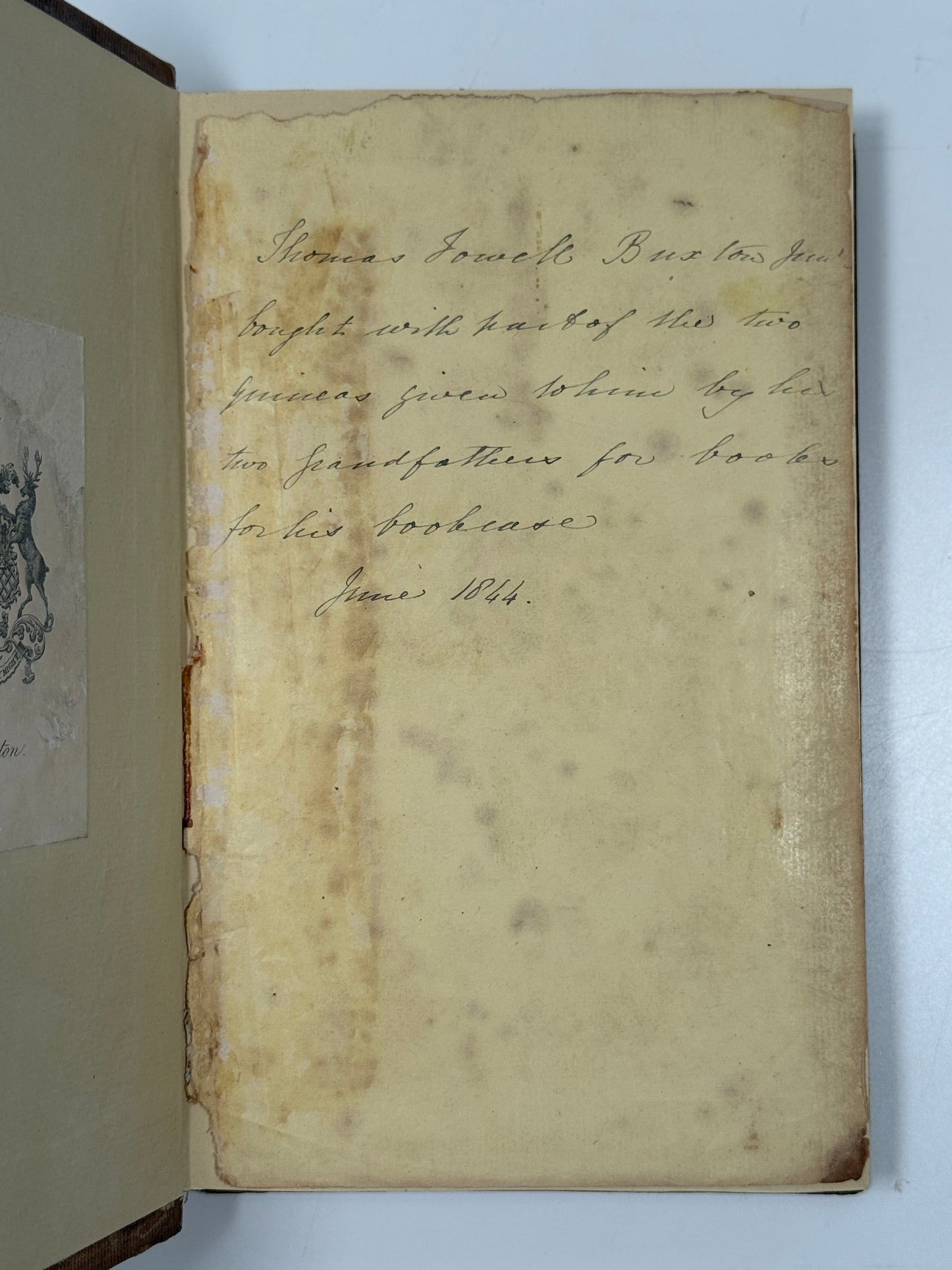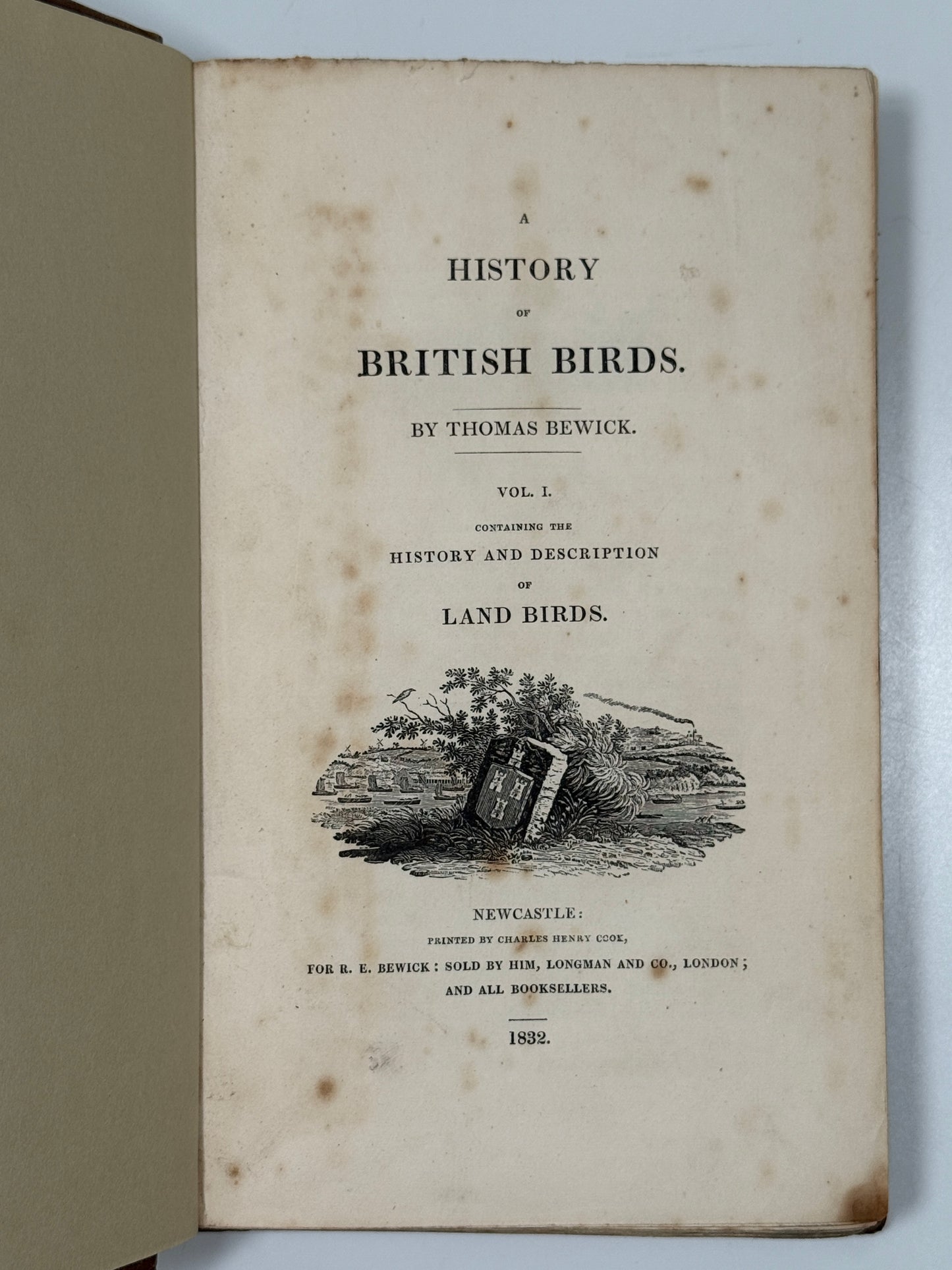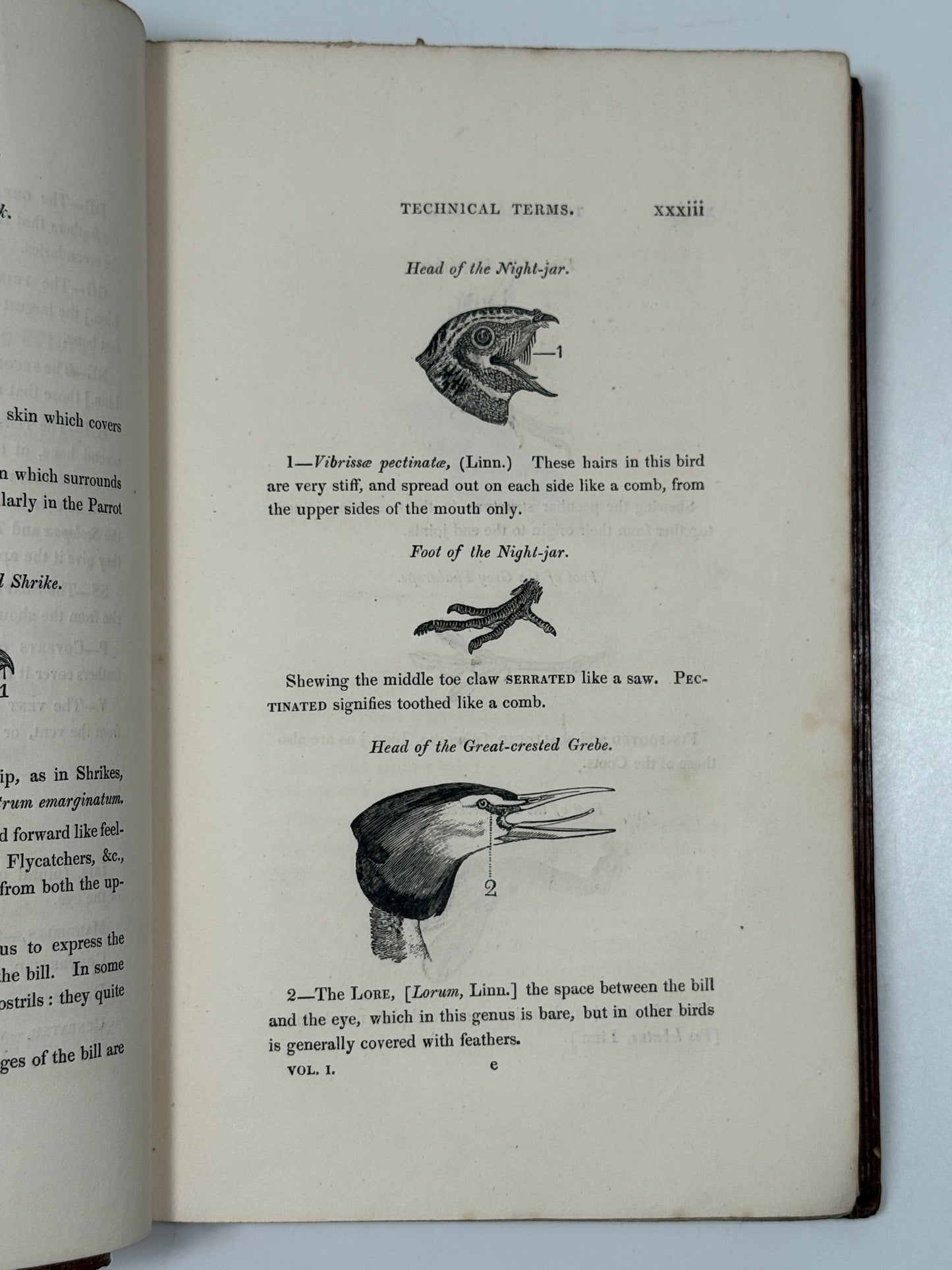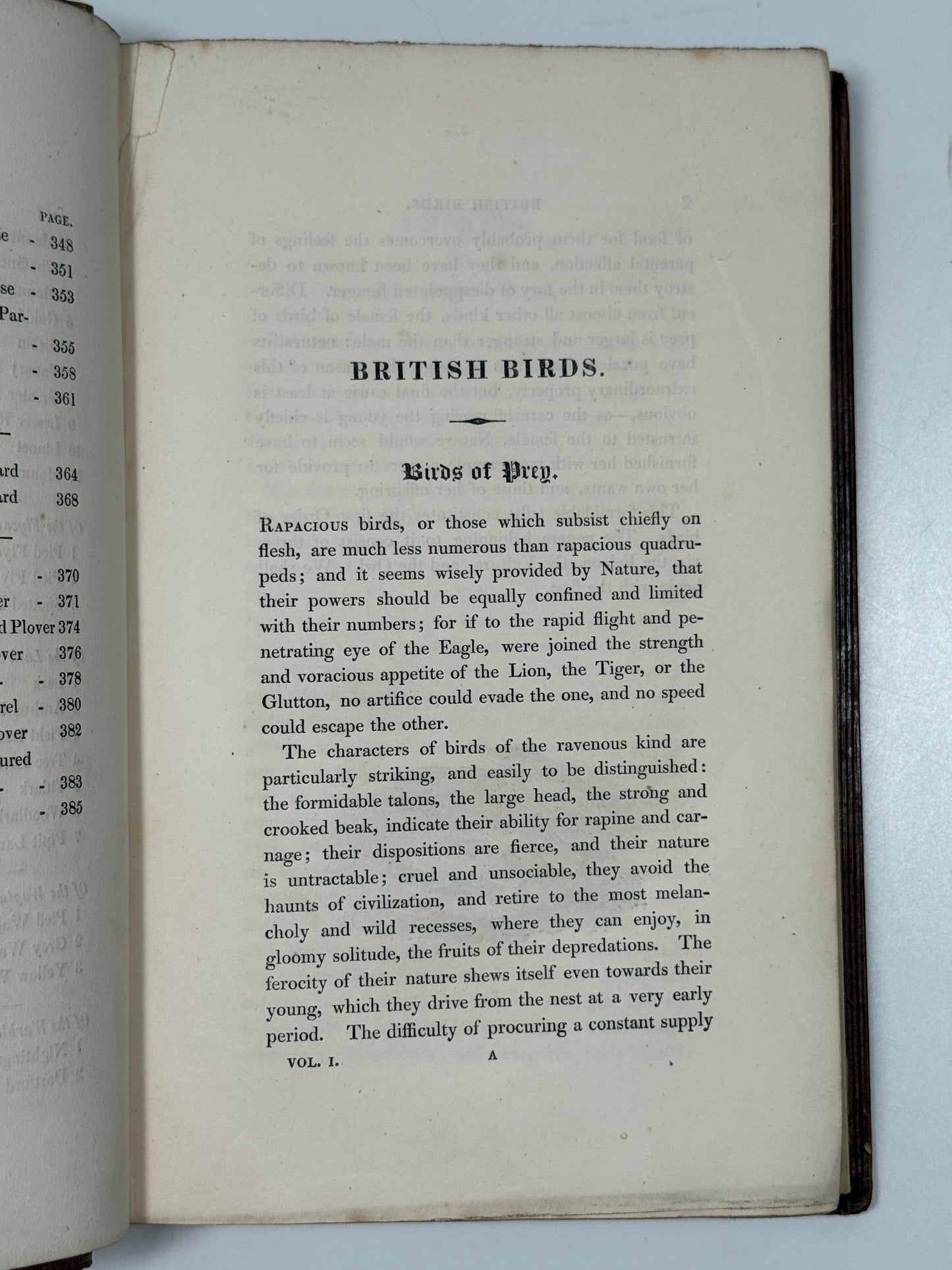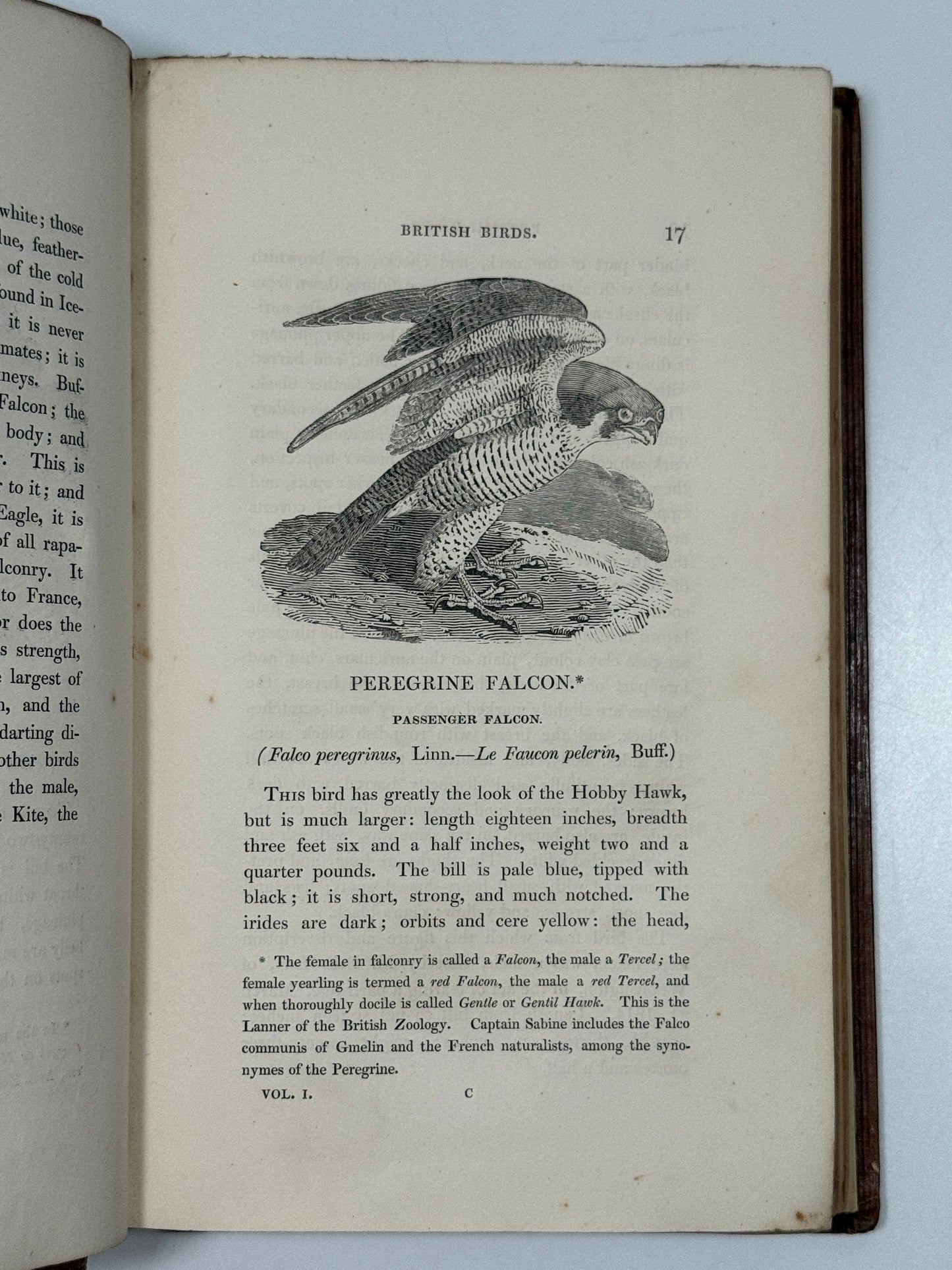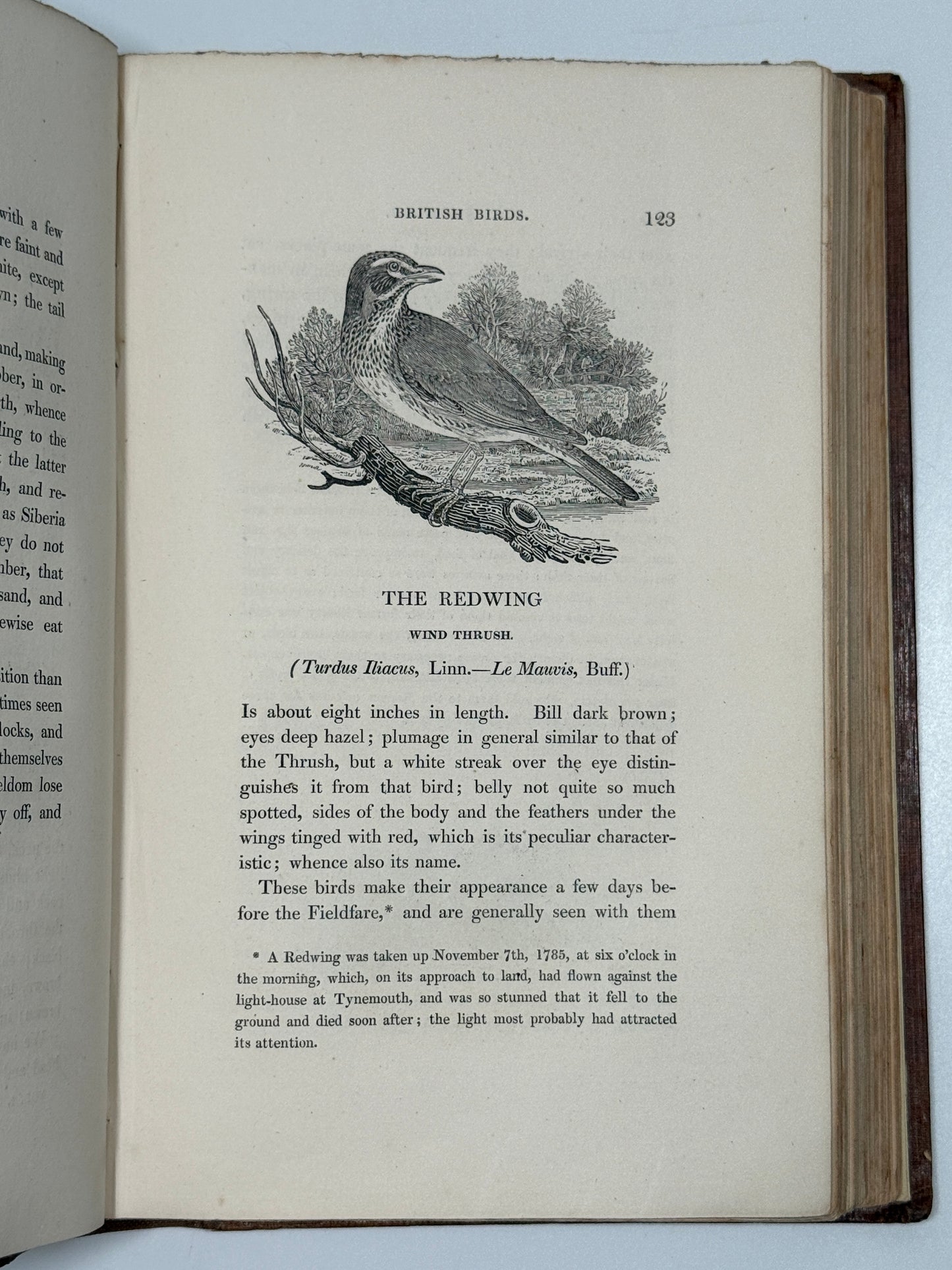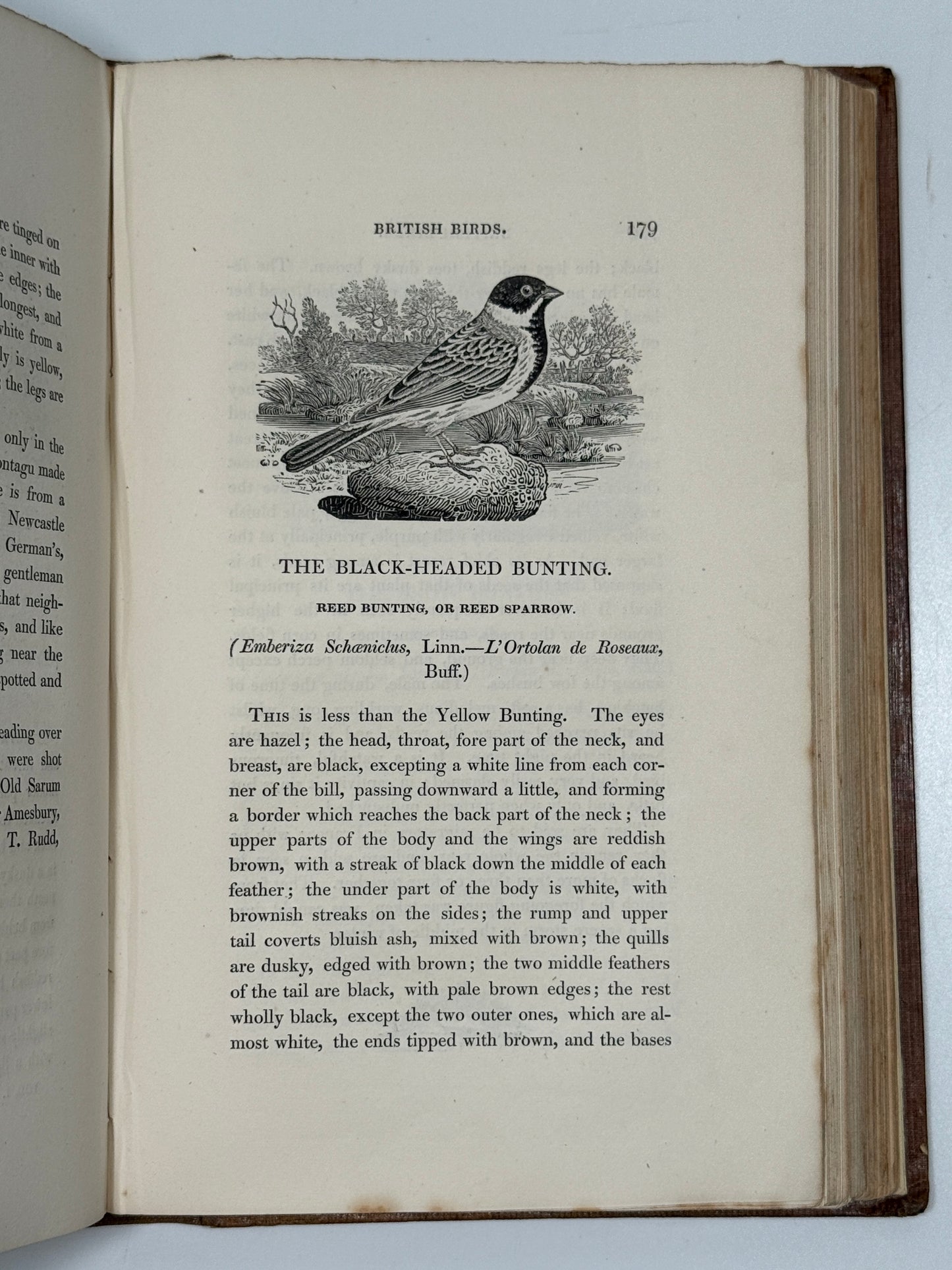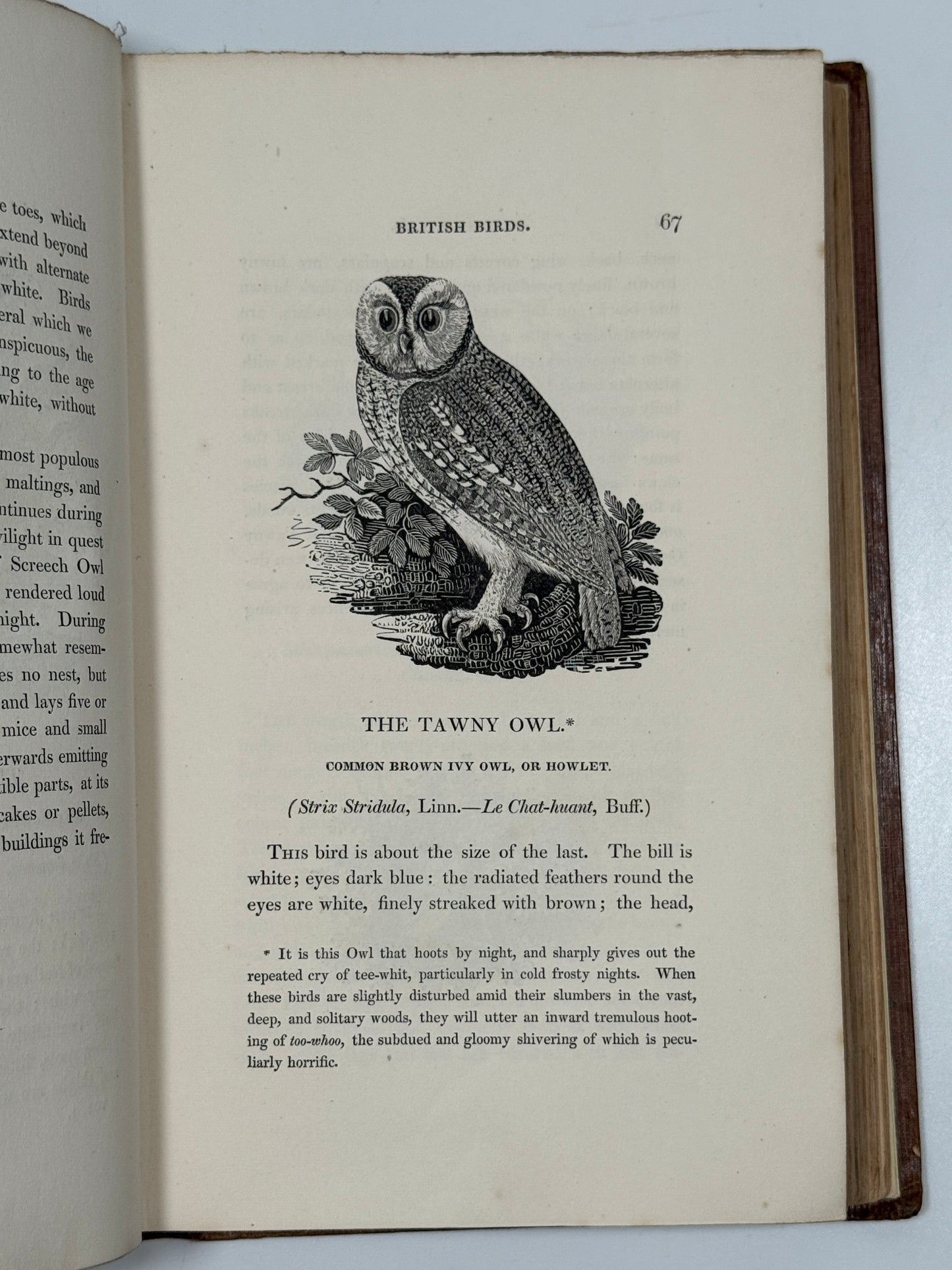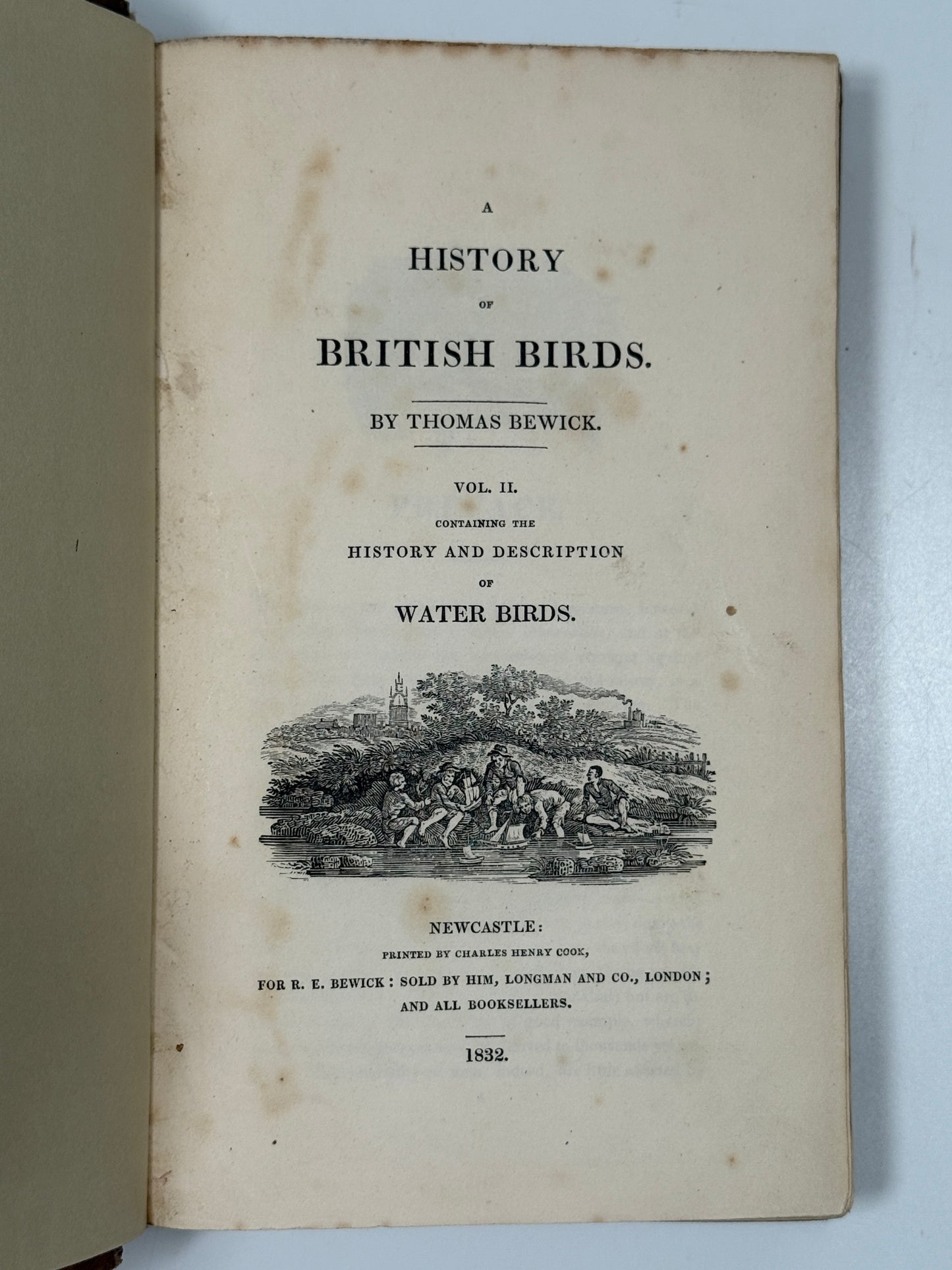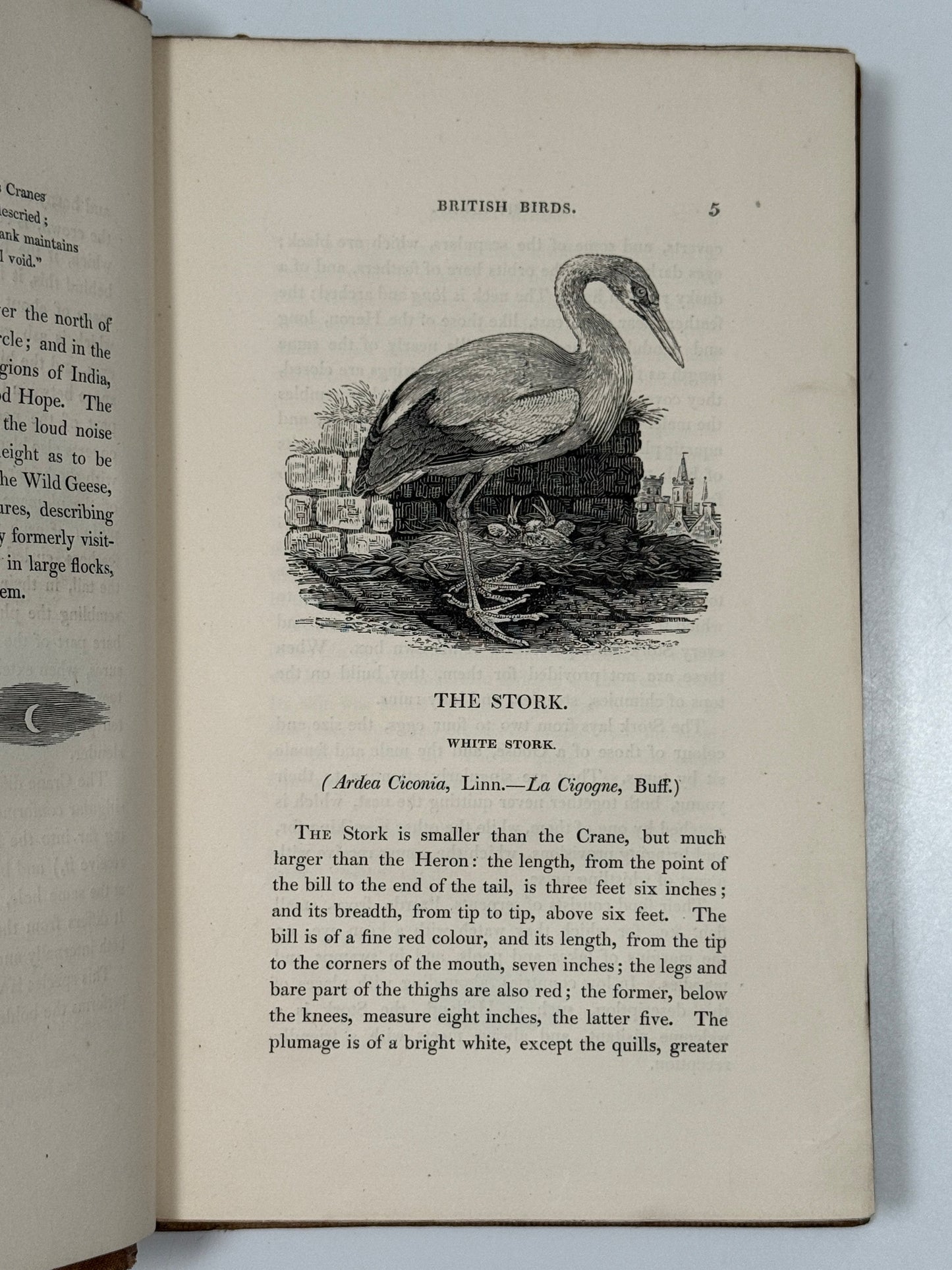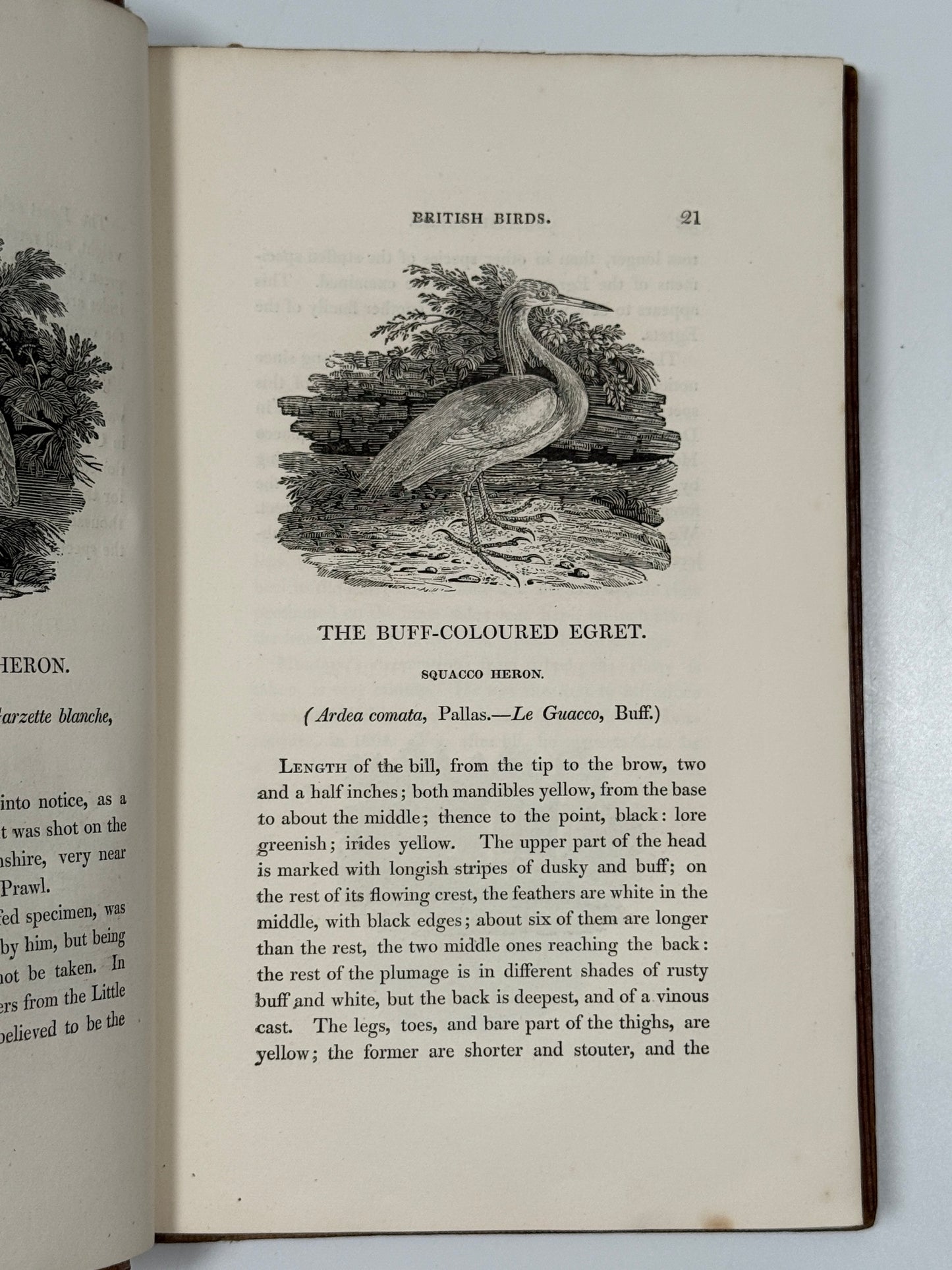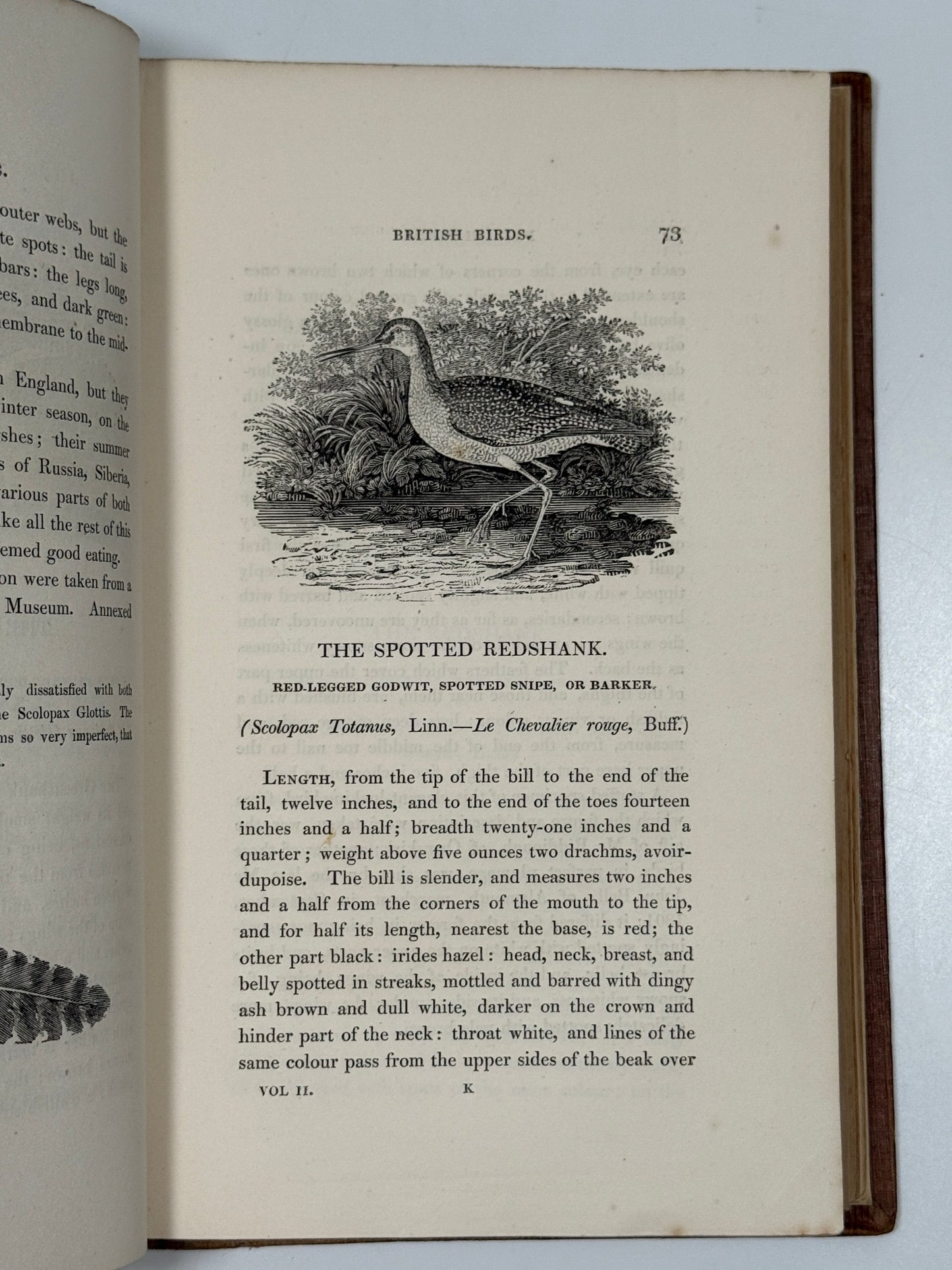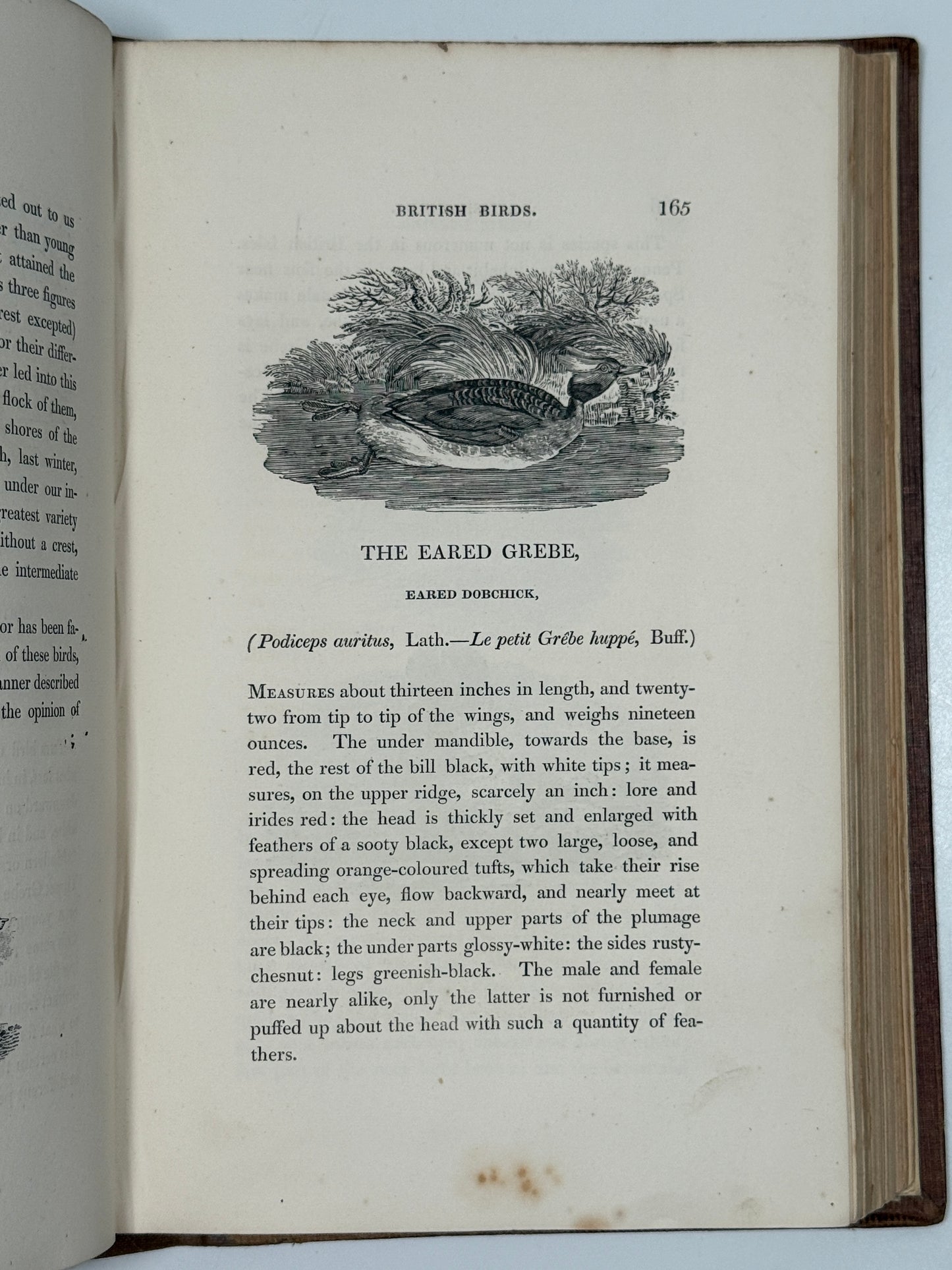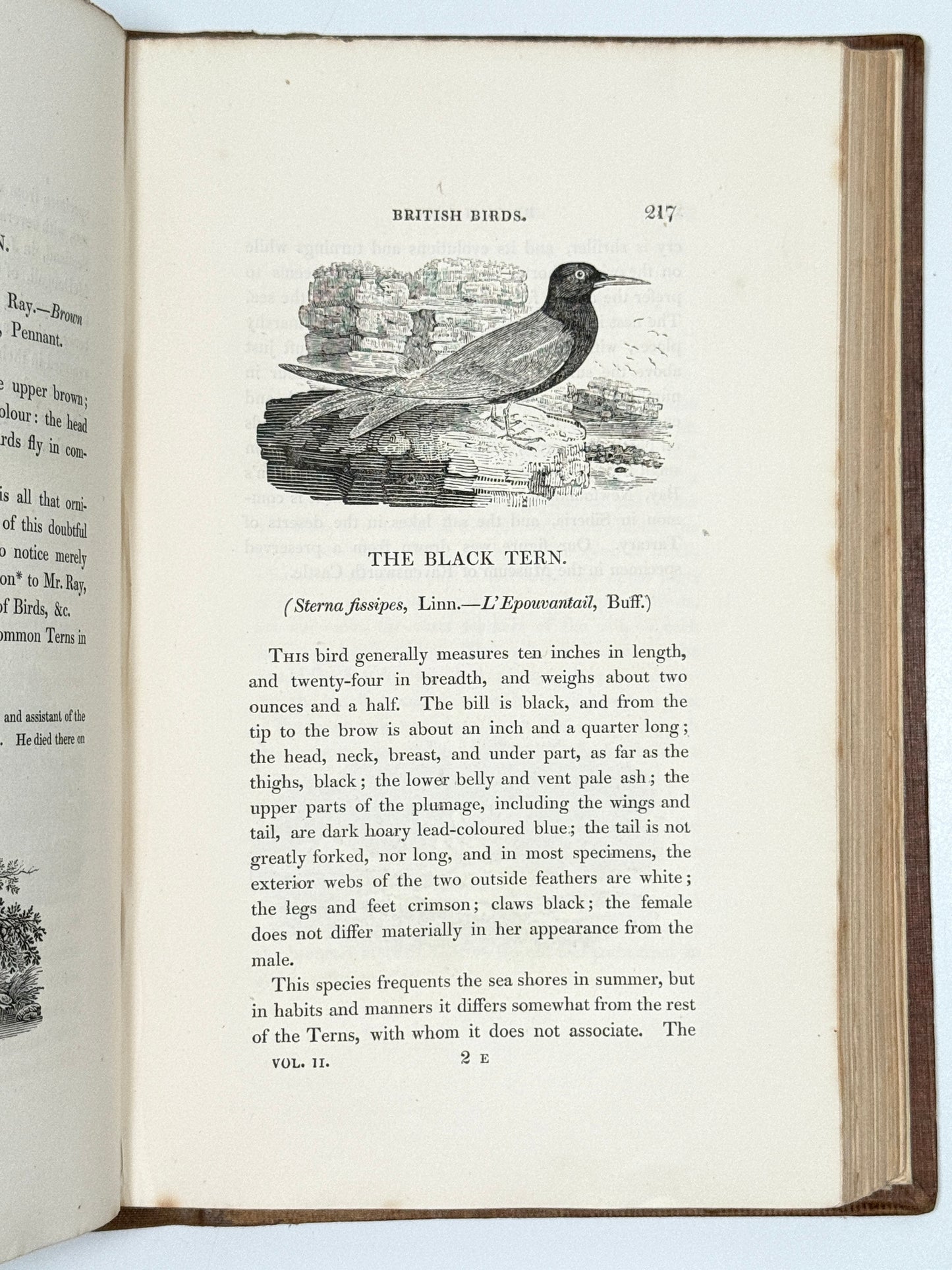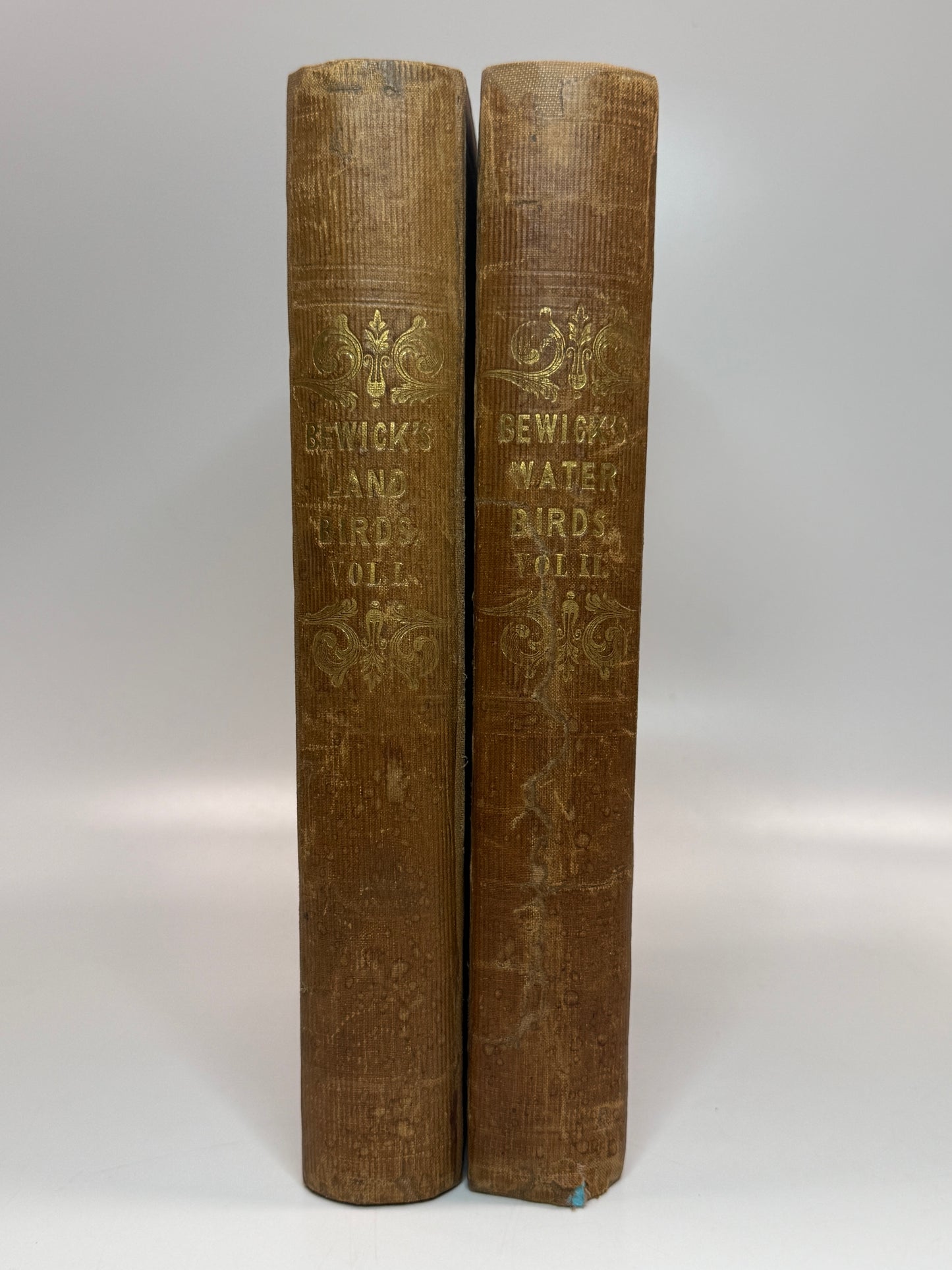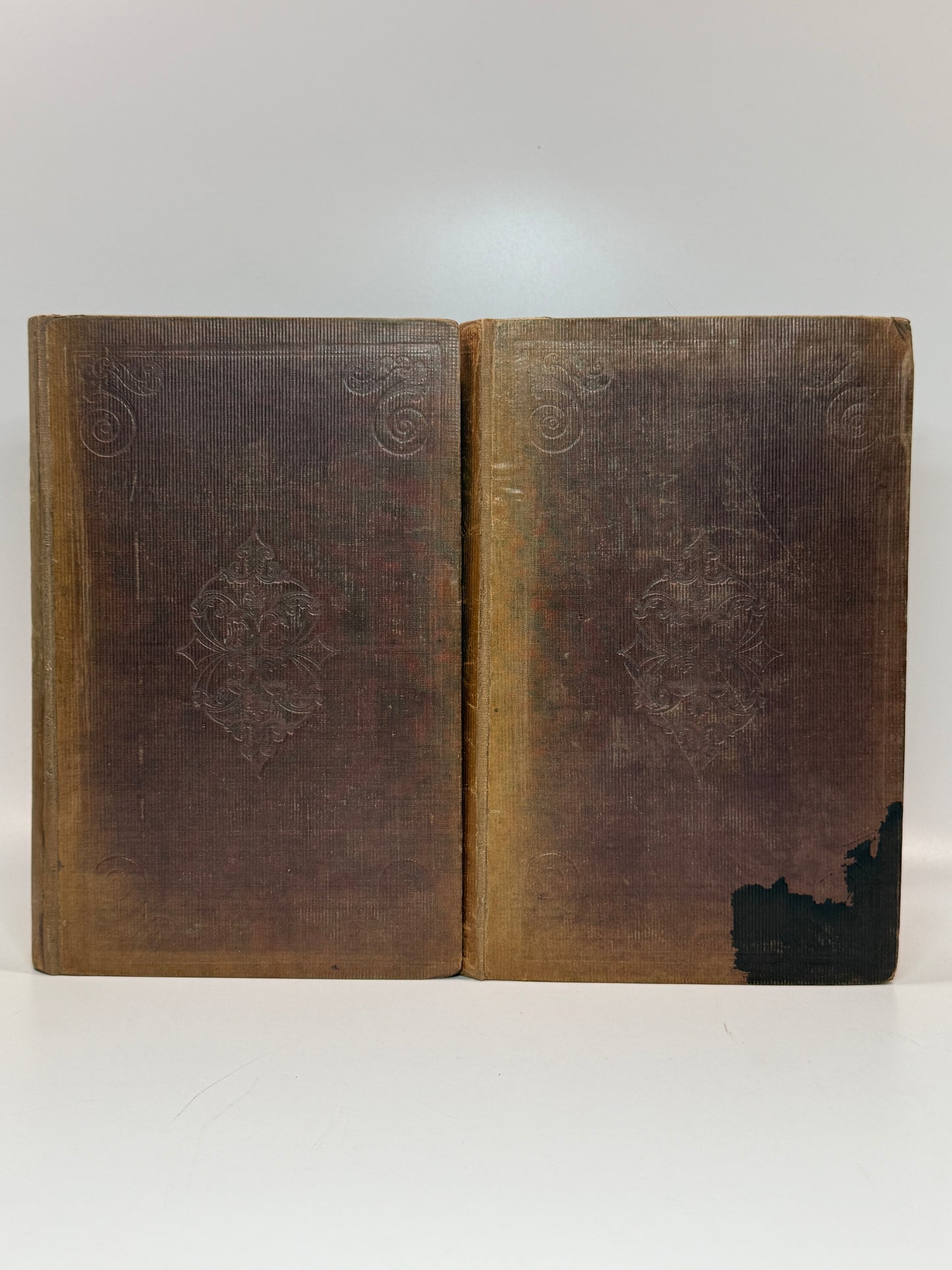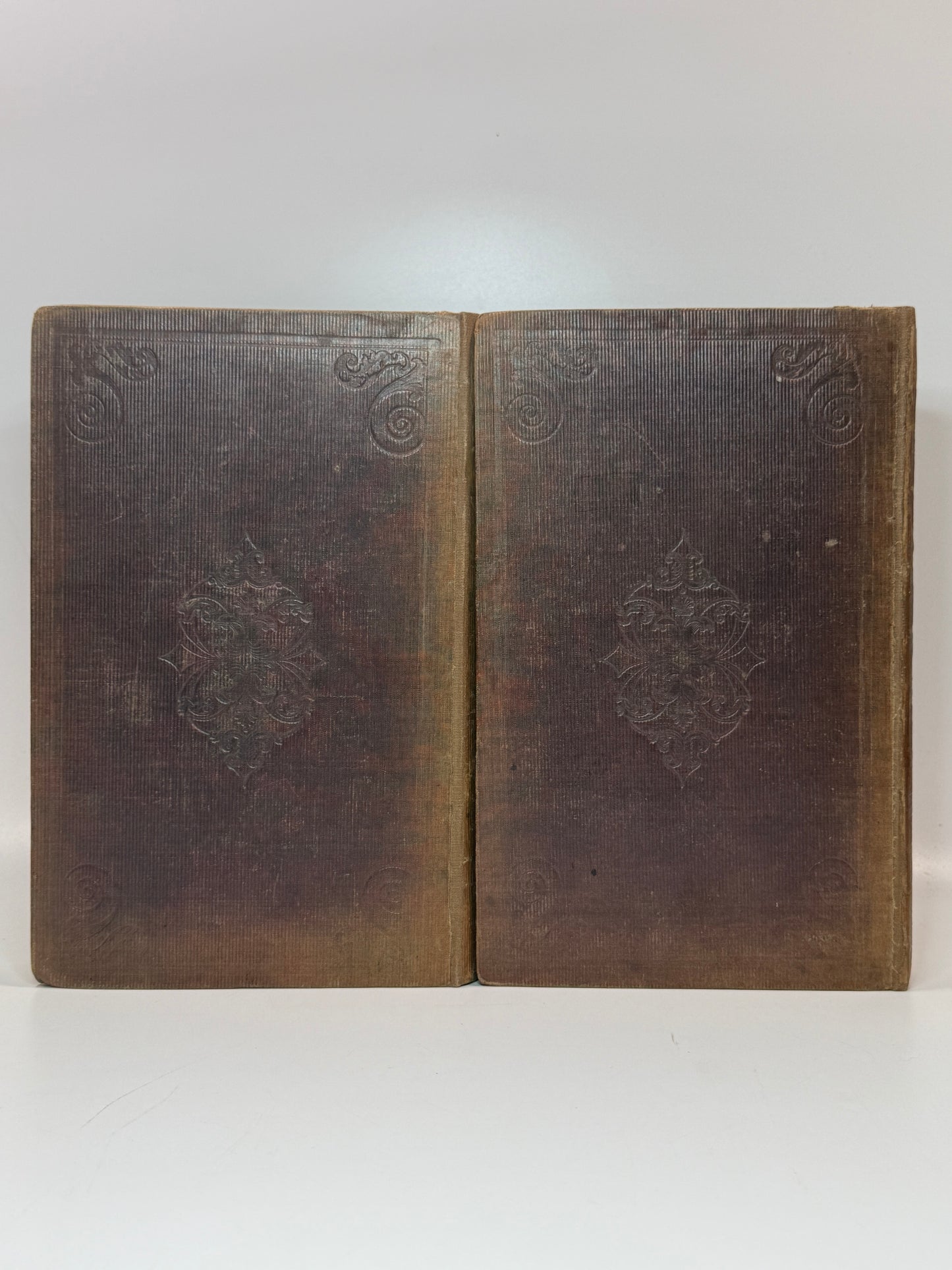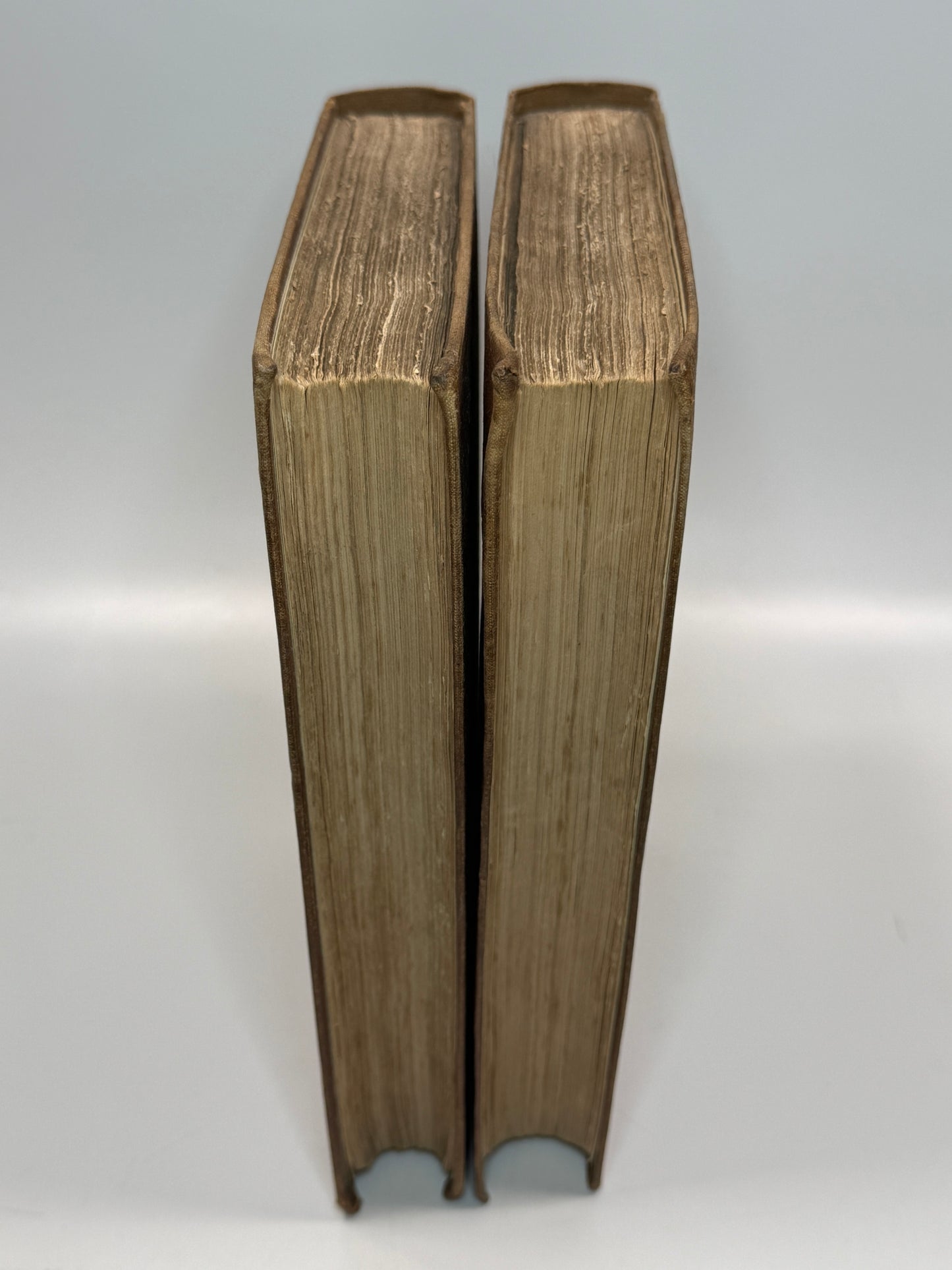A History of British Birds by Thomas Bewick 1832: Thomas Fowell Buxton's Copy
A History of British Birds by Thomas Bewick 1832: Thomas Fowell Buxton's Copy
Couldn't load pickup availability
A History of British Birds. By Thomas Bewick. Vol I. Containing the History and Description of Land Birds, Vol II. Containing the History and Description of Water Birds. Newcastle: Charles Henry Cook, 1832, 8vo.
THOMAS FOWELL BUXTON'S COPY OF THIS FAMOUS ORNITHOLOGICAL WORK, VERY RARE IN ORIGINAL CLOTH.
-------------------
Very rare in original cloth, a lovely copy of Bewick's beautifully illustrated ornithological work, A History of British Birds. The last copy we can trace in the original cloth was in 1991 (Christie's 19 Apr 1991 lot 28). The provenance of this copy is very significant as it belonged to one of the most important persons of the Victorian period. He was a founder of the RSPCA and was as significant as William Wilberforce in campaigning for the abolition of slavery, later depicted on the British five-pound note, see more details below.
-------------------
Provenance:
Loose note on an original blank of Thomas Fowell Buxton dated June 1844, as well as his bookplate. He was an extremely important anti-slavery politician, a founder of the Anti-Slavery Society and successor of William Wilberforce as the leader of the abolition movement. In May 1823, Buxton introduced in the House of Commons a resolution condemning the state of slavery as "repugnant to the principles of the British constitution and of the Christian religion", and called for its gradual abolition "throughout the British colonies". He was arguably equally as significant as William Wilberforce in working towards the eradication of the slave trade.
David Livingstone was strongly influenced by Buxton's arguments that the African slave trade might be destroyed through the influence of "legitimate trade" (in goods) and the spread of Christianity. He became a missionary in Africa and fought the slave trade all his life.
He was a founding chairman of the Society for the Prevention of Cruelty to Animals, later renamed to the RSPCA. He was very closely associated with Elizabeth Fry and worked with her for prison reform, providing her financial support.
He opposed capital punishment and pushed for its abolition. Although he never accomplished that, he worked to restrict the crimes for which capital punishment could be meted, whose number eventually fell from more than 200 to just 8. Other moves for which Buxton argued were the suppression of lotteries and abolition of suttee, the practice of burning widows in India. He was depicted on the British five-pound note between 2002 and 2017 and is generally considered to be one of the most significant British figures of the Victorian period and is celebrated as a great moral voice of the 19th century. Items associated with him are extremely rare.
It is especially significant to have a book which must have truly appealed to him as a great advocate for the protection of animals.
-------------------
Size: 151 x 230 mm (approx., each)
Condition:
[(1), (i)-xl, 386pp., (1)]; [(1), (i)-xxii, 424pp., [1], (1)]
Easily the greatest obtainable copy of this edition, collated as complete, including the rare advertisement here bound in at the rear, usually lacking. The endpapers are later, sympathetic and follow the colour of the originals, contemporaneous with the rebacking, but there is one original endpaper preserved, loose. Significantly, this contains the inscription dated June 1844 from Thomas Fowell Buxton, one of the most significant British figures of the Victorian period. His bookplate is also preserved to the front pastedown of both volumes.
Original cloth bindings, sympathetically rebacked preserving the vast majority of the original binding. Cloth sunned with some discolouration, ink stain to bottom right of the front board of volume two. Boards all securely attached, bindings secure, and stand without shelf lean. A few edges unseparated. Mild foxing, else generally bright and clean throughout the text blocks. The original blank with the inscription is foxed on both sides, with the foxing on the verso following the foxing of the title leaf's recto proving its association with this copy.
